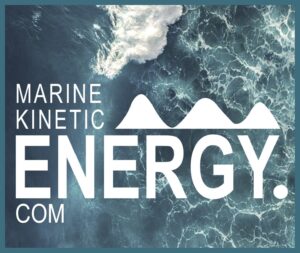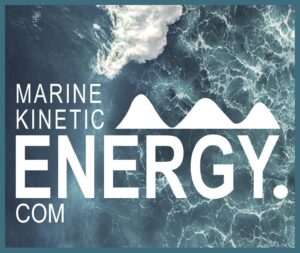Hydrokinetic energy refers to the point created by the movement of the ocean. The tides of the Earth, ocean currents, and free-flowing rivers are a plethora of highly concentrated power, sustainable, and efficient energy sources. The more traditional power of hydropower (river pipelines and dams) is also produced through water flow, but it’s discussed here. Several hydrokinetic energy sources are described below.
In-Stream Hydrokinetic Energy
Hydrokinetic projects produce electricity by directing water through rivers channels and canals to irrigate rivers and other human-made conduits. These hydrokinetic designs can be constructed as individual units or in groups. They can be submerged, floating, or anchored to existing structures like bridge abutments as well as the like. Other water structures. They could be situated in the vicinity of hydropower projects currently being developed.
Hydrokinetic turbine uses the force of water flow (current) to turn turbines directly within domestic estuaries, river coast waters, or tidal flow. These turbines create electrical generators that transform the kinetic energy produced by the water’s movement (called “Hydrokinetic Energy”) into electrical power. Professionals then convert the energy into the appropriate voltage and transmit it through those transmission lines on the utility grid to the consumers.
Hydrokinetic Energy Device
The amount of energy we get by the system is contingent on the speed of the ocean, river, or tidal stream. We can measure it t relative to the volume of water by the level of the water.
Sea Hydrokinetic Energy
The sea creates two kinds of energy:
(1) thermoelectric energy generated by the sun’s warmth and
(2) mechanical power produced by the tides and the waves.
Moreover, the tides are driven in part by the gravitational of the moon pull, while winds cause wave energy. Tides and waves are both renewable energy sources as the energy of the ocean (ism solar energy) are relatively constant. Conversion of electrical energy by waves and tidal power has a connection with mechanical devices.
Wave Energy
The devices harvest energy from full motion generated by powerful ocean waves and pressure variations beneath the surface. Furthermore, the most promising potential for massive wave energy is located on the west coast of the U.S.
Hydrokinetic Turbines Working
Hydrokinetic turbine do not need any kind of reservoir to keep moving. However, initially, the impacts are low. Moreover, they are simple to install and the designs are easy to understand. It is very useful for rural and remote areas.
Pro’s of Hydrokinetic Energy
The device isn’t a contributor to greenhouse gases.
- It is also an energy source that is the best.
- Hydrokinetic devices have a minor impact on the ecosystem of their local area, dependent on the site’s geographical location.
- The natural hydrokinetic energy sources are generally stable and not affected by weather changes.
- Hydrokinetic energy production can generate 40 times more energy than wind turbines of similar dimensions.
Cons
Despite the numerous positives and drawbacks, the endeavor to harness the potential of water to create sustainable energy will move forward rapidly. Companies have formed partnerships to develop hydrokinetic power as the primary power source for the Southeastern United States. The goal and vision are to create a place that can be a springboard for other regions to invest in hydrokinetic energy to enhance the existing renewable energy sources.
Many hydrokinetic energy generator are large infrastructure projects which require reservoirs, dams and power-generating turbines. They need significant financial investment. While a massive hydropower plant may be capable of providing energy at no cost for up to 100 years after, the initial cost could be significant. This, in conjunction with the fact that the locations for reservoirs are becoming more scarce in time is a reason why the costs of construction will remain very high.
Challenges of Hydrokinetic Energy Generator Projects
It is the most reliable source of energy. But, it is dependent on the conditions of the weather and precipitation. Since most hydrokinetic energy generator relies on river water flows, the consequences of dry spells that result in less flow impact the power of hydroelectric generation.
While usable energy is obtained from water, it’s important to be aware of the various factors that affect the use of the resource, both positive and negative. Like every other source of energy, has its own initial costs and impacts on the environment to construct the infrastructure needed. It is also renewable, safe, and compatible with other sources of energy.
What are Recreation Impacts of Hydrokinetic Projects?
There are many kinds of water resources that can be used to generate electricity using the energy generated by kinetic energy. Many believe that using the energy stored in off-shore and near-shore waves has the most chance of producing energy from all hydrokinetic turbine. The rising and fall of ocean waves are controlled by wind and dependent on the ocean’s geology. The possibility of using ocean waves as power sources is due to the availability of resources and incredible technological advancement.
Additionally, if we could get 15% of the energy from U.S. coastal waves, we could generate more electricity than what we get from dams for hydrokinetic energy production. Most of this wave energy is near big towns and cities along the Pacific Coast.
Alongside waves, scientists believe that ocean tides could be sources of energy. Every tide change creates streams, referred to as the tide stream. These predictable tidal stream flow patterns can offer us an alternate source of clean energy without the need for barrages, or dams.
Bottom Line
We can generate Hydrokinetic power through turbines that harness the energy from natural flowing streams, tidal flows, or wave motion without entangling the water. Though hydrokinetic turbines do not require extra energy for dams to be present and the structures that support their structure(s) are at a minimum, the chance of negatively impacting navigation and the ecosystem of aquatic life.
In addition to collisions and restrictions on waterways’ traffic, the restriction of a river due to an installation could alter the water’s depth and flow, which can affect navigability, and also change the sedimentation pattern by increasing or reducing the requirement for dredging channels. This is an issue for waterway managers and users.

